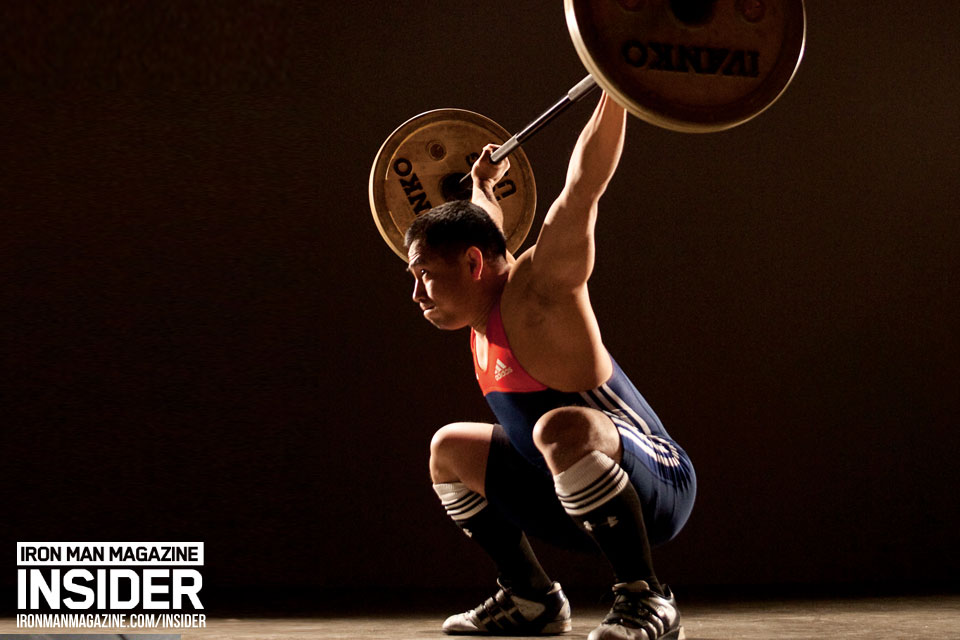


The reason that so many athletes who lift weights regularly do not try the Olympic lifts is that they believe the lifts are far too complicated to learn on their own. While it’s true that both the snatch and clean and jerk are high-skill movements and require a great deal of work to master, there’s really no reason that an athlete can’t learn the required technique.
All the lifters I trained and lifted with and against in the ’50s and ’60s had taught themselves how to do not only snatches and clean and jerks but also the Olympic-style press, which is a high-skill movement as well. What’s more, I competed in contests for almost three years before receiving any instruction on the lifts.
All it takes is instruction, which I’m about to provide, plus patience and sweat. Even if you have no desire to enter an Olympic weightlifting meet, the two contested lifts can be most useful. By learning to snatch and clean and jerk, you greatly improve foot speed, timing, coordination, quickness, flexibility and mental concentration—and those are attributes you use in any sport.
This is the first of a two-part series on how to squat snatch. You can also do snatches in the split style, but I’ll cover that at a future date. This installment focuses on the preparation phase. Before actually trying to squat snatch a weight, you must be able to do two exercises: the power snatch and the overhead squat. Both are great for building overall leg, back and shoulder strength.
I’ll start with the power snatch. If you have already been doing power cleans, which are a part of most scholastic and collegiate strength programs, you will be able to move right into power snatches easily.
In order to do either power snatches or overhead squats, you must have sufficient shoulder girdle flexibility to lock a bar overhead comfortably. Women and younger athletes seldom have any problem with shoulder flexibility, but many older athletes do—mostly because they have spent much too much time working their upper bodies and concentrating on the flat bench.
Most Olympic lifters carry a broomstick with them and are constantly stretching out their shoulders. You can do it with a towel or piece of rope. Just work the stick or towel back and forth over your head until you feel your shoulders loosen up a bit, and then bring your grip in slightly and do it some more.
The grip you use for power snatches depends on several factors: height, body size and degree of flexibility. An Olympic bar has a score on each side, six inches from the collars. Wrap your ring fingers around that score. Then, after doing a few reps with just the bar, make any adjustments that are necessary. You need to be able to hold the bar overhead so that it’s right above the back of your head, with your arms locked.
Step up to the bar so that your shins are touching it. Shut your eyes and imagine that you’re about to do a standing broad jump. That’s your ideal foot position for pulling. Grip the bar firmly, flatten your back, lower your hips, and, after making sure your front deltoids are slightly in front of the bar, look straight ahead. You’re now ready to pull.
Most beginners have a tendency to jerk the bar off the floor, but that causes it to run forward and the back to round. Do this instead: Get set, tighten every muscle in your body from toes to neck, and think about pushing your feet down into the floor; then guide the bar upward in a controlled manner with your arms straight and your back extremely flat. If you pull your shoulder blades together, that will help you maintain a flat back throughout the pull.
As the bar passes midthigh, drive your hips forward explosively and, with your arms still straight, contract your traps. All the while, the bar must stay tight to your body. Once the bar passes your navel, bend your arms and climb high on your toes. The combination of involving the traps, biceps and calves will make the bar leap upward.
One of the most important form points for the power snatch is that at the very conclusion of the pull, when you bend your arms, they must be turned up and out, not back. Once your elbows turn backward, you no longer have any upward thrust on the bar.
When the bar passes your head, dip under it by bending your knees a bit, and lock it out with straight arms. Don’t merely catch the bar and hold it overhead; rather, push up against it and stretch it outward. That will enable you to position it exactly where it should be, which is on a line directly up from the back of your head.
If you find that you’re having difficulty locking your arms at the end of your power snatches, lower the weight. You’re not going to be able to hold a heavy weight overhead with bent arms, and it’s cause for disqualification in competition.
While holding the bar overhead, continue to exert pressure up against it, and on the final rep of the set push against it for five or six seconds. That builds a different and very valuable kind of strength in your shoulders, back and legs.
You lower the bar in two steps: Bring it from overhead to the top of your thighs, bending your knees to help cushion the impact; then, while maintaining a very flat back, ease the bar down to the floor.
Reset, and do the next rep. The bar should resemble a whip, moving slowly at first, picking up speed through the middle and becoming a blur at the top. Doing five reps is fine for the warmup sets, but once the weights get demanding, do only triples and do as many sets as you can handle while maintaining good form.
When you’re learning how to power snatch, don’t skip your feet to the side. You want to concentrate fully on pulling the bar in the precise line and finishing the motion strongly, and not skipping your feet will help with that.
Once you’ve learned how to power snatch, overhead squats will not be a problem. Power-snatch the weight, lock it solidly overhead, and then go into a deep squat. You will probably have to shift your feet around a bit to find the ideal foot position for going into a deep squat.
You’ll quickly discover that this form of squatting is quite different from front or back squats. The bar must travel in a tight up-and-down line. Should you allow it to waver too far out front or too far back, you will not be able to control it.
You must maintain complete control of the bar throughout the up-and-down movement by keeping your arms locked and exerting pressure up into the bar. In the event that it does stray too far out of the proper position, you can just push it away from your body.
One final point: Don’t attempt to explode out of the bottom of an overhead squat the way you would on a front or back squat. That will invariably drive the bar out of the correct line. You must squeeze out of the deep bottom in a controlled fashion and learn to lower the bar in a deliberate manner as well. Because you do them more slowly than other forms of squats, overhead squats hit new muscles and attachments in your shoulders, back, hips and legs.
Triples also work best for these. The lower reps enable you to focus on the various form points, which you’re going to need for the squat snatch. I’ll discuss that in the next installment.
Editor’s note: Bill Starr was a strength and conditioning coach at Johns Hopkins University from 1989 to 2000. He’s the author of The Strongest Shall Survive—Strength Training for Football, which is available for $20 plus shipping from Home Gym Warehouse. Call (800) 447-0008, or visit www.Home-Gym.com. IM






















You must be logged in to post a comment Login